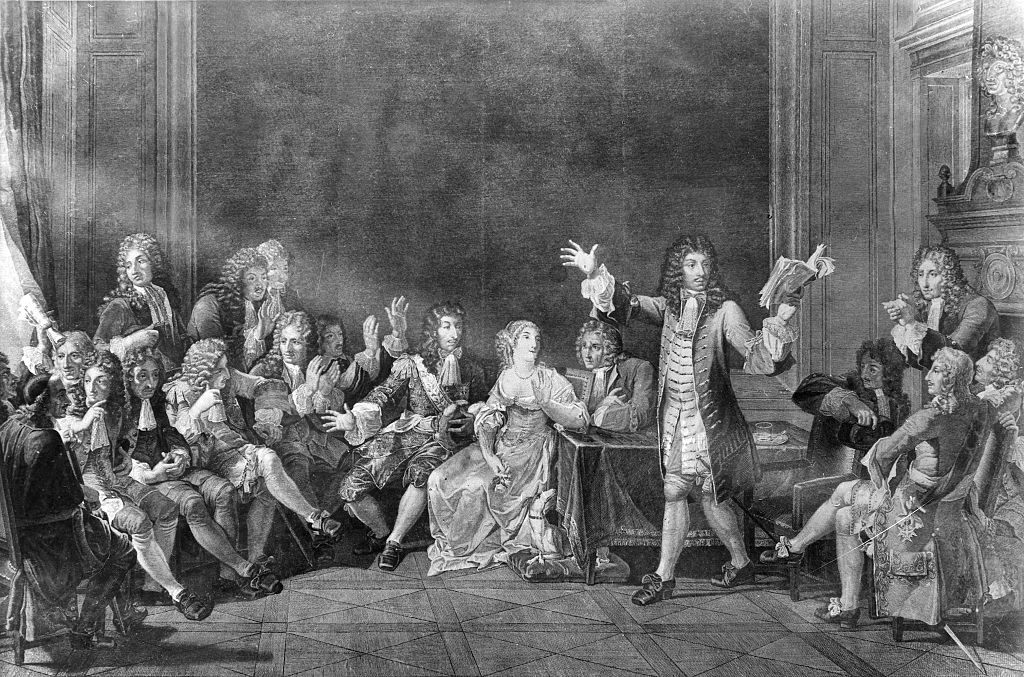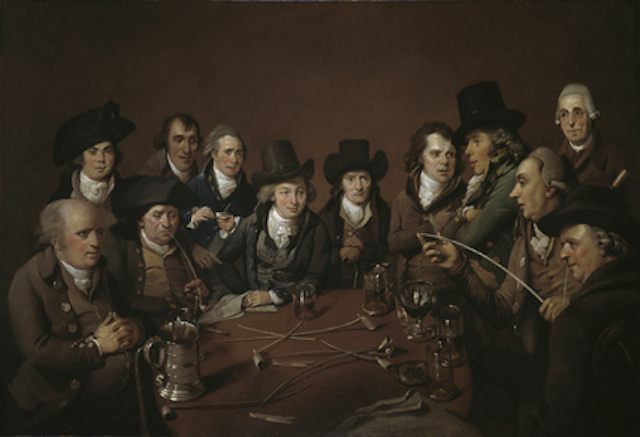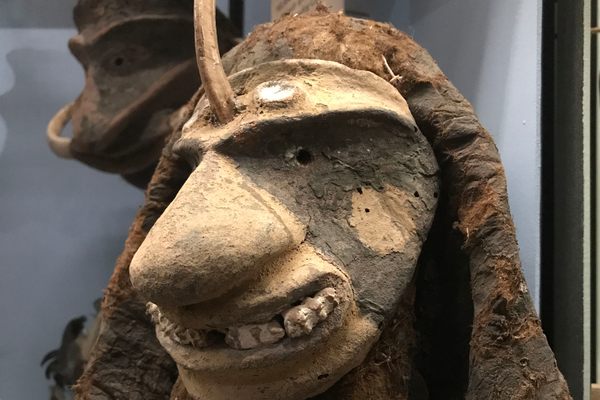Even in the 1700s, Book Clubs Were Really About Drinking and Socializing
And “a considerable element of boisterous good humor.”

In theory, book clubs are supposed to be about reading and discussing books. In practice, they are often more about hanging out with a group of people, drinking, gossiping, and generally having a nice evening. Depending on the percentage of the group that has actually read the book, it may be discussed, or it may not. The book is the excuse, not necessarily the point.
It turns out it’s always been this way.
Ever since the advent of book clubs in 18th-century England, when books were scarce and expensive, these organizations have been about more than reading. Book clubs were organized to help members gain access to reading material and to provide a forum for discussion of books the club held. But they were also about gossip and drinking. As the University of St. Andrews’ David Allan writes in A Nation of Readers, “In most cases, food and alcohol in copious quantities, accompanied we may suspect by a considerable element of boisterous good humour, played an important part in the life of the book clubs.”


In 18th-century England, book culture was blooming as ever more volumes were printed. As more books appeared, people invented new ways of accessing them. Libraries began to open, many of which were commercial circulating libraries that required a fee to join. As Abigail Williams reports in The Social Life of Books, published this month, these libraries had become fixtures by the 1740s. As urban literary culture spread through England’s more provincial places, there may have been two hundred of them—or a thousand. (Estimates vary.)
These libraries weren’t just places to find books, but social institutions as well. One famous library also had a billiard room, a public exhibition room, and a music library. “They were not the hushed environments that we now associated with libraries, but, at their best, elegant spaces full of people to converse with,” Williams writes. Libraries even had a touch of controversy, as they gave people of different social classes access to books and offered women a place to congregate outside the home.

Book clubs were part of this literary culture. In book clubs today every member might buy his or her own copy of a book, but in the 18th century, part of the point of the clubs was to pool resources in order to buy more books. Belonging to a book club meant having a larger personal library than you might otherwise have access to—you just had to share. There are few records of the activities of these early book clubs, but those that survive indicate that, as with today’s book clubs, members intended to get together and talk about books, but social aspects were key selling points. As Williams writes, “Members often met in inns or public houses or coffeehouses, and the clubs were clearly perceived to offer more than merely access to texts, because even readers with substantial book collections joined them.”
In fact, in some cases, the social side may have been the primary attraction. In the 1960s, Paul Kaufman, a retired professor who became a bibliography consultant for the University of Washington, made an extensive study of 18th-century English libraries and book clubs, and found that, in at least a few cases, monthly dinners were a key feature and a factor that distinguished them from other libraries or subscription societies.

One club, for instance, had 22 members (including Branwell Brontë, the sole brother of the literary siblings) and met for monthly dinners. “A broad hint of conviviality is given in the rules,” writes Kaufman, “which imposed fines for swearing, for being drunk ‘so that a member be offensive to the company,’ and for unseemly scrambling for books to borrow!” Another society, founded in 1742, lasted for decades, and the dinners were a key feature for it as well. “Article XV of the Regulations emphasizes in detail the monthly dinners, specifying—with elaborate exceptions—the Tuesday before the full moon,” Kaufman reports. A member who missed the dinner had to pay a shilling. For other misdemeanors, which included letting a dog into the club room or revealing his vote for or against a potential new member, members had to contribute a bottle of wine.
The reputation of these clubs was such that, in 1788, Charles Shillito wrote a satirical poem depicting “The Country-Book Club” where members gathered to “taste the sweets of lit’rature—and wine.” Shillito took a dim view of the country doctor, squire, and vicar who gathered to drink and gossip at a meeting “that leaves no vacant time to think, or read.” The meeting of the fictional club gets more and more rowdy, until finally:
Thus, meeting to dispute, to fight, to plead,
To smoke, to drink—do anything but read—
The club—with stagg’ring steps, yet light of heart,
Their taste for learning shown, and punch—depart.
There is a certain snobbery to this poem—what’s so great about you and your literary friends, Charles Shillito?—and it shouldn’t be taken as an accurate report on 18th-century book clubs. But it does have a ring of truth: Even today, as The New York Times once reported, this is the “great divide” in book club culture. Are these meetings meant for discussion of literature, or are they social events? It is, apparently, a distinction as old as book clubs themselves.





















Follow us on Twitter to get the latest on the world's hidden wonders.
Like us on Facebook to get the latest on the world's hidden wonders.
Follow us on Twitter Like us on Facebook